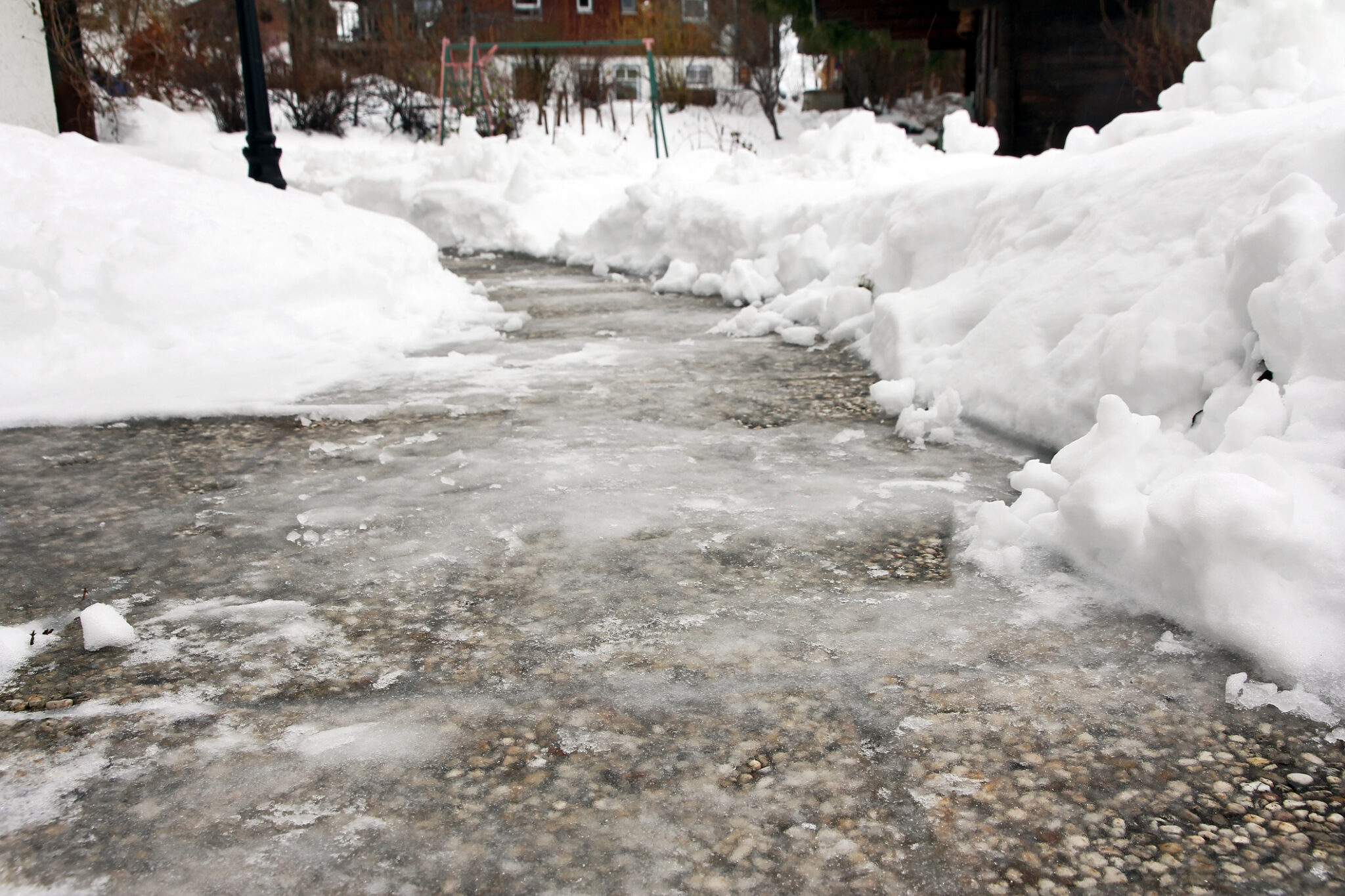According to Injury Prevention and Control statistics from the CDC, slip, and fall injuries are the leading cause of non-fatal injuries reported among all age groups in the U.S. With slip and fall injuries so prevalent, it is critical for property owners and property maintenance contractors to monitor and manage the melt and re-freeze exposures on walkways and parking areas where there is regular foot traffic.

Snow and ice melt that occurs during the day will often re-freeze overnight, creating slippery walking conditions once again by morning. The resulting thin layer of ice is referred to as “black ice” and may look like wet pavement at first glance, but could pose a very dangerous slip and fall hazard.
Here are some tips to proactively manage your property throughout the winter:
- Don’t wait, beat the storm: Applying ice melt to your surfaces before weather events prevents ice from sticking to the surface, and it will be easier to clear the ice later on.
- Control the runoff: Snow should be piled at the low areas of your lot, if possible, to prevent melt runoff and refreeze over common walking areas.
- Inspect rain gutters and downspouts: Avoid having any water flow from these onto walkways where it can freeze and become a slip and fall hazard.
- Mix it up with sand: Applying store bought rock salt or calcium chloride ice melt is a great way to melt ice accumulation on the ground; however, the melted ice may still freeze again overnight. It is best to use a rock salt and sand mixture, or spread some sand on top of the ice melt once applied. The sand will help prevent the wet surface from refreezing and will provide some extra grip for pedestrians.
- Timing is everything: Areas of melt and refreeze are most dangerous in the early morning hours and at night. It’s best to treat these areas early before opening for business.
- Make a plan: If you or an employee will be responsible for snow removal or clearing walkways, make a plan to designate who is responsible, monitor conditions regularly, and document each time areas are cleared or treated.
- Routine Inspection: Conduct periodic walkthroughs of the property to look for areas of risk (water runoff, low areas where water tends to pool) and ensure proper safety measures are in place.
These icy walkway prevention & safety tips areanother way MMG Insurance is helping our policyholders protect their piece of the world.